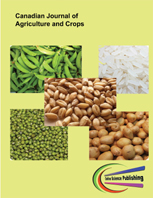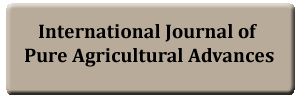Willingness to Use Composite Flour that Contains High Quality Cassava Flour (HQCF) among Bread and other Confectioneries Producers in Oyo State, Nigeria
DOI:
https://doi.org/10.20448/803.4.2.41.55Keywords:
Importation substitution, Composite flour, HQCF, Willingness to use, Bread, Confectioneries, Preference, Policy.Abstract
The study examined the willingness to use composite flour that contains high quality cassava flour (HQCF) among bread and other confectioneries producers in Oyo state, Nigeria. Two-stage sampling method was used to selected 255 respondents using structured questionnaire. The study revealed that 42.0% of the bread producers and 14.0% of the other confectioneries producers were willing to use HQCF. The composite flour policy had positive effect on wheat importation (p<0.01). There was significant difference in the cost incurred on composite flour and whole wheat flour per production for bread (p<0.05) and other confectioneries (p<0.01) producers. Bread producers and other confectioneries producers used composite flour that contained averages of 73.8kg and 1.4kg of HQCF per production. The average costs of the HQCF were ₦20,674.4 and ₦403.2 for bread and other confectioneries per production respectively. Access to HQCF, Sales revenue per production were factors that influenced the willingness to use composite flour that contains HQCF by bread producers while age of respondent, participation in training on the use of HQCF and experience in baking were factors that influenced willingness to use composite flour that contains HQCF by the other confectioneries producers. Enforcement of the policy on the flour millers to produce composite flour that contains HQCF by government coupled with enlightenment and intensive training on the use of composite flour would help raise the willingness to use composite flours containing HQCF among bread and other confectioneries producers.


